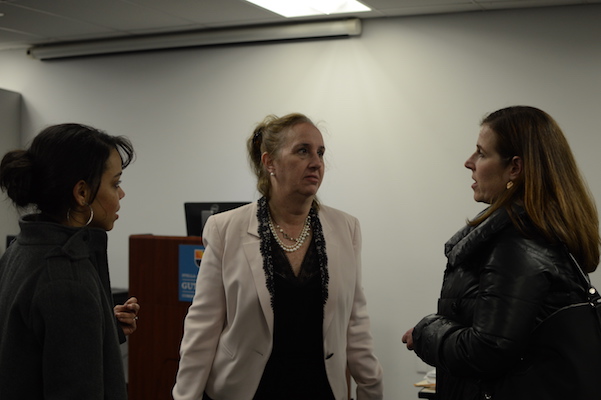
BY JACKSON CHEN | Manhattan Borough President Gale Brewer has given her formal thumbs up to the Midtown East rezoning proposal, but recommended several guidelines for additional steps that should be undertaken in implementing it.
The rezoning aims to revitalize the Midtown East area with modern office developments by offering prospective developers denser buildings so long as they contribute to the public realm projects within the district or buy development rights from landmarked buildings. The Midtown East rezoning area runs roughly from East 39th to 57th Streets, between Third and Fifth Avenues, with a slice that extends to Second Avenue between East 42nd and 43rd Streets.
The public review process began January 3 when the Department of City Planning (DCP) certified the rezoning application. Since then, the proposal underwent scrutiny at Community Boards 5, 6, and 8, followed by the Borough Board that is made up of Brewer, the borough’s councilmembers, and the chairs of the 12 community boards. On April 12, Brewer issued her formal recommendation for the rezoning as another step forward for the proposal.
“For decades East Midtown has been the economic heart of our city, and this plan will make it stronger than ever in the decades to come,” Brewer said in a written release. “The linchpin of this plan is the notion that public benefits, like transit improvements, support for landmarks, and open space, should go hand-in-hand with new development. That’s smart planning, and I hope it will be a model for major rezoning plans to come.”
Along with her approval, the borough president offered suggestions for implementing the rezoning, most of them echoing community input voiced at recent stages of public review. In her 30-page letter to the DCP, Brewer made the following nine major recommendations:
- Require developments on lots of 40,000 square feet or more to create indoor or outdoor public space;
- Fund and begin to implement open space commitments, such as improving the East 53rd Corridor Streetscape, creating a pedestrian plaza at Pershing Square East, and improving vehicular patterns on Park Avenue;
- Create a “citywide civic organization” that would advise the Governing Group, which is responsible for overseeing the rezoning district’s Public Realm Improvement Fund, on urban design and public space issues;
- Increase the transparency and accountability of the Public Realm Improvement Fund with clear procedures, public reporting on its funding, and online publication of meeting transcripts or recordings;
- Remove all existing residential buildings on the east side of Third Avenue from the rezoning district;
- Reevaluate and lower the value of the transferrable development rights — currently set at $393 per square feet — used to calculate the value of Public Realm Improvement Fund contributions required as part of development rights transfers;
- Establish a minimum score for daylight required for all buildings redeveloped under the rezoning plan;
- Work with Greenacre Park at 217 East 51st Street to explore the shadow impacts on the park from the rezoning;
- Compile annual reports on residential conversions for the borough president and the affected city councilmember and community board.
With Brewer’s approval and recommendations delivered, the rezoning now moves to the City Planning Commission and then on to the City Council and the mayor before its implementation.


































